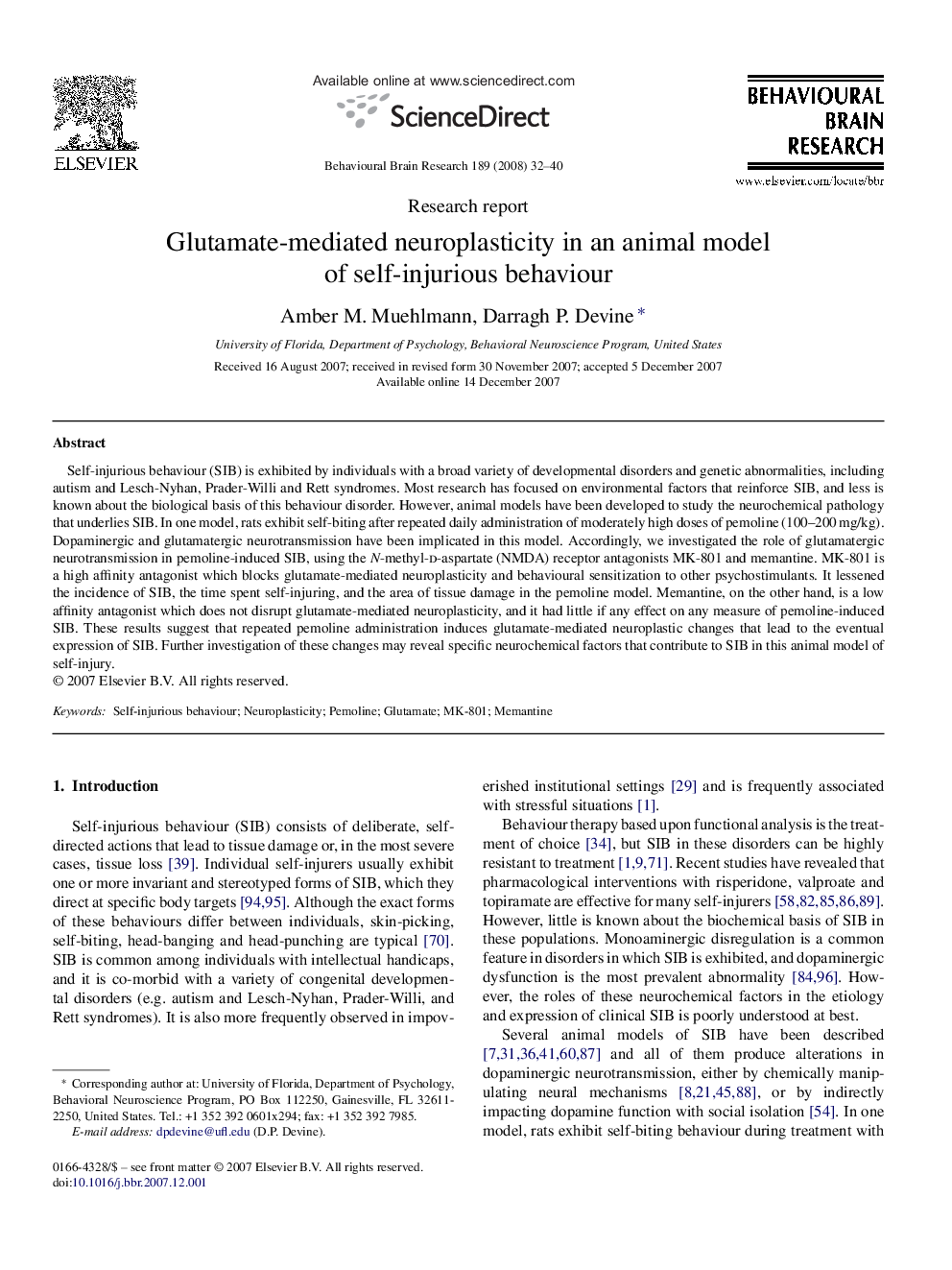| کد مقاله | کد نشریه | سال انتشار | مقاله انگلیسی | نسخه تمام متن |
|---|---|---|---|---|
| 4315275 | 1290071 | 2008 | 9 صفحه PDF | دانلود رایگان |

Self-injurious behaviour (SIB) is exhibited by individuals with a broad variety of developmental disorders and genetic abnormalities, including autism and Lesch-Nyhan, Prader-Willi and Rett syndromes. Most research has focused on environmental factors that reinforce SIB, and less is known about the biological basis of this behaviour disorder. However, animal models have been developed to study the neurochemical pathology that underlies SIB. In one model, rats exhibit self-biting after repeated daily administration of moderately high doses of pemoline (100–200 mg/kg). Dopaminergic and glutamatergic neurotransmission have been implicated in this model. Accordingly, we investigated the role of glutamatergic neurotransmission in pemoline-induced SIB, using the N-methyl-d-aspartate (NMDA) receptor antagonists MK-801 and memantine. MK-801 is a high affinity antagonist which blocks glutamate-mediated neuroplasticity and behavioural sensitization to other psychostimulants. It lessened the incidence of SIB, the time spent self-injuring, and the area of tissue damage in the pemoline model. Memantine, on the other hand, is a low affinity antagonist which does not disrupt glutamate-mediated neuroplasticity, and it had little if any effect on any measure of pemoline-induced SIB. These results suggest that repeated pemoline administration induces glutamate-mediated neuroplastic changes that lead to the eventual expression of SIB. Further investigation of these changes may reveal specific neurochemical factors that contribute to SIB in this animal model of self-injury.
Journal: Behavioural Brain Research - Volume 189, Issue 1, 16 May 2008, Pages 32–40